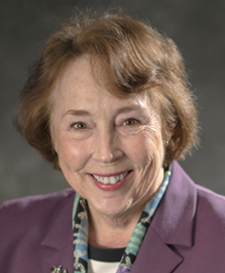The College of Saint Benedict and Saint Benedict’s Monastery take up a large slice of land in the small central Minnesota city of St. Joseph. The two prominent institutions draw people to St. Joseph, but are also exempt from local property taxes, creating something of a budget puzzle for city leaders.

As a result, St. Joseph relies on a state program known as Local Government Aid, which makes up 30% of the city’s budget, Schultz said. That helps St. Joseph afford basic costs and avoid higher property taxes.
Still, inflation has made local government services more expensive, and city and county officials from around Minnesota say state aid used for critical services hasn’t kept up. They also recognize the state’s enormous budget surplus is a rare opportunity to significantly increase spending on LGA, which primarily benefits cities in Greater Minnesota, and a similar aid program for counties.
Lawmakers are considering two bills that would dump money into local government budgets. One would increase the aid for cities and counties by $300 million in total and ensure payments rise with inflation. The other would distribute $300 million specifically for public safety spending.

Some Republicans have pushed back on the new cash for LGA, but the program often receives bipartisan support. A bigger question for Gov. Tim Walz and Democrats who control the Legislature will be how much they want to spend on the program while juggling a host of other priorities.
What LGA and CPA do
Minnesota currently spends about $564 million every year on LGA, distributed based on a complex formula that is aimed at predicting city needs. About 90% of cities are eligible for the cash.
The program dates back to the late 1960s, and supporters say it helps even out revenue between cities with more robust tax bases that can raise large sums of money with property taxes and cities that can’t raise as much cash without sky-high levies. It’s aimed at creating an equal standard for core services like fire departments, police, parks, water infrastructure and street maintenance.
Among the 112 cities that won’t get any money in 2023 are metro-area suburbs like Andover, Champlin, Deephaven, Excelsior and Edina. But some cities with large industrial tax bases, like Becker, which hosts a power plant, also are left out. There are wealthier Greater Minnesota cities that get no cash, too, like Nisswa.
County Program Aid is similar, though smaller, and helps counties with a range of other costs like social services that the local governments handle on behalf of the state. The price tag for CPA this year is $265 million.
Many local officials testified they use state aid specifically to ward off increased property taxes. “We look at our budgets, we look at demand and increased services, we look at what we’re going to get in CPA and we deduct that and that’s our levy,” said Olmsted County Commissioner Sheila Kiscaden, in a March Senate Taxes Committee hearing.
Some cities do ask the Legislature for permission to implement a local sales tax. But those are typically for capital projects rather than ongoing budget needs.

Bradley Peterson, executive director of the Coalition of Greater Minnesota Cities, said local officials are grateful to have gotten extra cash from lawmakers in 2019. But he said with such a large surplus, the state can do more to help. “Inflation has marched on since then, and we’re still behind and the needs keep growing,” he said.
Walz this year has proposed increasing both LGA and CPA by an extra $40 million. His initial budget plan for a $30 million hike caused a bit of public drama when the Coalition released a scathing statement as the governor rolled out his budget in front of reporters. “I got a little salty,” Walz said the next day, after pushing back on the organization. “You smoked me when I was standing there.”
The Coalition and Walz smoothed things over, and Walz pledged to increase money for LGA in his budget.

The Revenue Department estimates the LGA increase with inflation would be $179.8 million in 2025 and $208 million in 2026.
Who a formula change helps
The legislation would also change the formula for distributing LGA based on a number of factors meant to estimate cities’ needs. For just one example, the money for cities with more than 10,000 people would be influenced in part by population decline and the percent of population over 65 years old, and the formula would no longer consider jobs per capita. For cities with a population of 2,500 to 9,999, average household size would be replaced as a formula factor by the percentage of the tax base classified as commercial, industrial or utility.
Klein said changes to the formula happen every decade or so, and this time it was re-written by a group of associations that represent city officials with help from with nonpartisan legislative staff and the state Department of Revenue.
Under the new formula, roughly two-thirds of the money would still go to cities in Greater Minnesota. That’s not necessarily a given. House researchers said the last time the formula was redone, legislators tried to ensure about half the cash would flow to the metro area.
Still, there would be 20 new cities that would get cash in 2024 under the new DFL plan. Fourteen of those cities would be in the seven-county metro area.
There are political connections — Peterson said by happenstance, not design — to many of the cities that would now receive LGA. Brooklyn Park, home to House Speaker Melissa Hortman, will get zero in 2023 and would receive just $2,536 for 2024 under the current guidelines. If Lislegard and Klein’s bill is approved, however, Hortman’s city would get nearly $1.7 million next year.
Several cities in political swing districts, many controlled now by Democrats, also see a spike from zero. Separately, a handful of cities in northeastern Minnesota within crucial legislative districts would get among the highest per capita change in LGA funding after the formula change and the influx of money.
The city to get the highest boost per capita is Virginia. That’s in Lislegard’s district.
Virginia Mayor Larry Cuffe testified at the February hearing in the House’s Property Tax Division. He said the city has faced huge costs lately, including a new sewage treatment plant — which required a $19.2 million loan from a state fund — and has more “major projects” ahead like a public safety center that LGA would help fund. Cuffe also said that the city’s economic driver is taconite mining, an industry that pays a separate tax in lieu of property taxes, leaving the city with less ability to raise revenue for core services like street repairs.

If the current $150 million bill passes, St. Joseph would get $468,000 more than expected in 2024. Schultz, the mayor, said the city might set aside a portion in a “nonspecified fund” for general costs. The rest could go to capital investment like street maintenance or buying equipment, using money up-front to avoid debt. “Public works always has to get a new lawn mower or a new truck or whatever,” he said. “Our fire department, they’re buying a new pumper truck this year, we also have to get a new grass rig.”
Legislative debate over LGA and CPA
In legislative hearings, some Republicans had concerns about the aid programs, or about the DFL approach to helping cities and counties.
Sen. Steve Drazkowski, R-Mazeppa, said he struggles with the idea of increasing LGA and questioned why the program didn’t result in larger property tax reductions. And he said property taxes are simply being substituted for state income taxes. Rep. Duane Quam, R-Byron, tried and failed to amend the House bill to freeze local property taxes for two years.
Klein argued income is taxed more progressively, meaning the state revenue disproportionately comes from people with higher incomes compared to property taxes.
Sen. Bill Weber, R-Luverne, said lawmakers should be mindful of saddling local governments with other costs like new mandates for social services or a potential paid family leave requirement. “We need to stop putting money in one pocket with one hand and taking it out of the pocket with the other,” Weber said.
Public safety aid possible
The second bill under consideration by DFLers, this one proposed by Sen. Heather Gustafson, DFL-Vadnais Heights, would distribute $300 million to cities, counties and tribal governments to use on public safety costs.
The idea was first proposed by Walz last year, primarily as a way to address violent crime that had become a top campaign issue. On Thursday, Walz increased his budget plan for safety aid to $550 million.
Unlike LGA, the money would be a one-time payment. That’s attractive to DFLers because a large portion of the $17.5 billion surplus is only available now and won’t continue in later years. There’s tougher competition for spending the “ongoing” budget surplus among Democrats with a host of budget priorities.
The Coalition of Greater Minnesota Cities, and some local officials, say they prefer ongoing money with no strings attached to use on budget needs. And the temporary nature of the cash makes it harder to spend on personnel, like hiring new cops or firefighters.
But it can be used on equipment. And Gustafson said she’s “more than happy to come back and keep fighting for more money for my police officers and the rest of the state.”
How much money each program might eventually get is still unknown. DFL lawmakers are still hammering out budget targets that will guide how they spend the surplus.


0 Commentaires